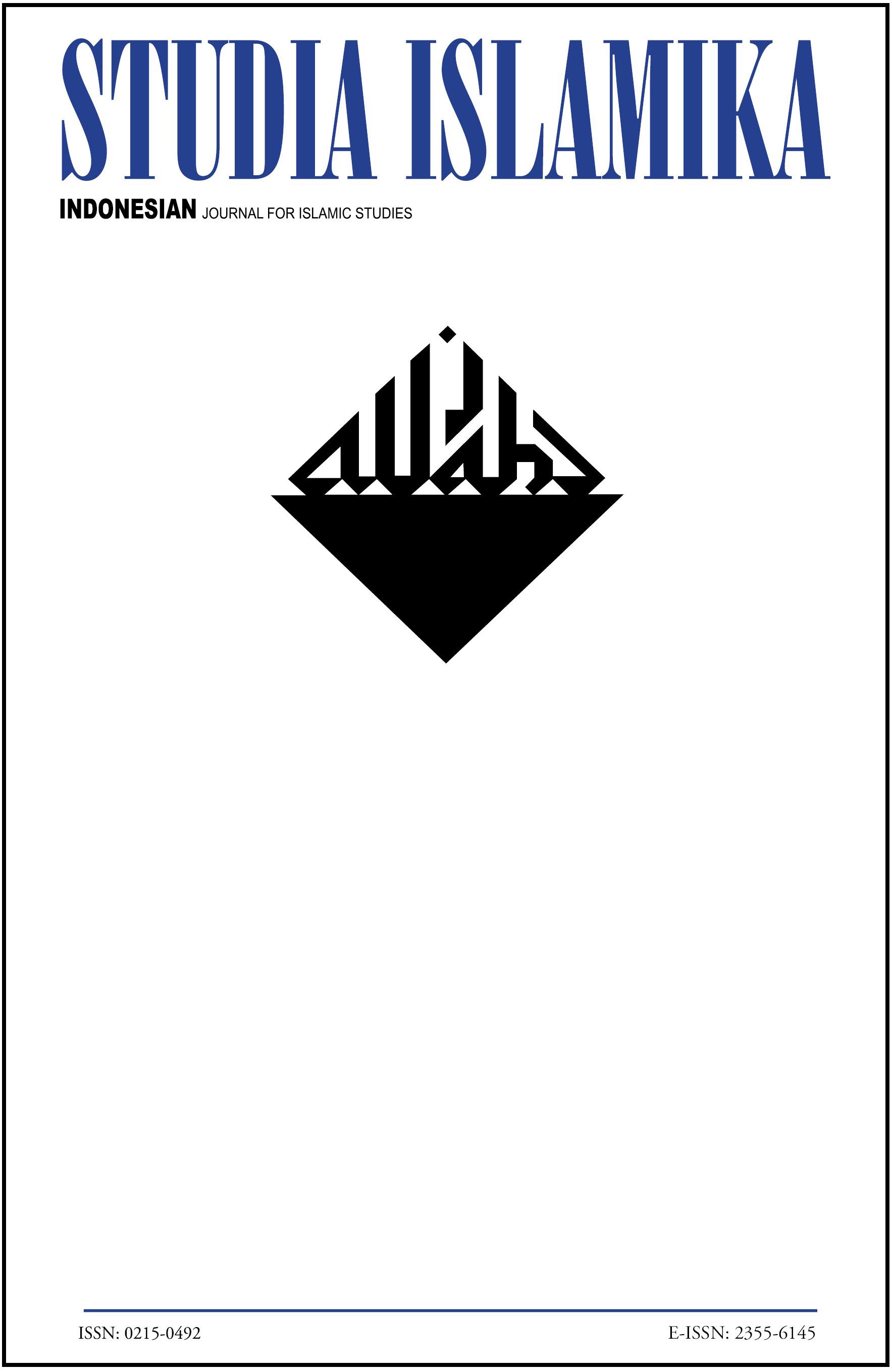Abstract
Sunan Kalijaga is one of the Wali (The Saint) who is very popular in Java. His name is increasingly popular because he was mentioned many times in a myriad of chronicles (babad) composed in the Islamic Mataram period, particularly since 17th century. Text written on the chronicles are hagiographic so that enormous things in the current Java, especially in the field of politic, culture, and religious is always cited as the creation of this Wali. The appearance and the story modification of puppet story, Lir-ilir song, bedug usage as salat signal, the legend of tatal (woodchips) in the establishment of the Demak Great Mosque, the sacrad cloth of Antakusuma, and etcetera, is deemed as the Sunan Kalijaga’s legacy. Therefore, he is being regarded as the representation of perfect human in view of the Javanese, not even less perfect than the kings who had ever ruled in Mataram Kingdom.DOI: 10.15408/sdi.v24i1.5222References
Arnold, Thomas Walker, and A. Nawawi Rambe. 1985. Sejarah Dakwah Islam. Jakarta: Widjaya.
Benda, Harry J. 1980. Bulan Sabit dan Matahari Terbit: Islam di Indonesia Pada Masa Pendudukan Jepang. Jakarta: Pustaka Jaya.
Berg, C. C. 1985. Penulisan Sejarah Jawa. Jakarta: Bhratara Karya Aksara.
Chambert-Loir, Henri, and Claude Guillot. 2010. Ziarah dan Wali di Dunia Islam. Jakarta: Komunitas Bambu.
Djajadiningrat, Hoesein. 1983. Tinjauan Kritis tentang Sajarah Banten: Sumbangan Bagi Pengenalan Sifat-sifat Penulisan Sejarah Jawa. Jakarta: Penerbit Djambatan.
Drewes, Gerardus Willebrordus Joannes. 1978. An Early Javanese Code of Muslim Ethics. The Hague: M. Nijhoff.
———. 1983. “Indonesia: Mistisisme dan Aktifisme.” In Islam: Kesatuan Dalam Keragaman, ed. Gustave E. von Grunebaum. Jakarta: Karya Unipress.
Geertz, Clifford. 1982. Islam yang Saya Amati: Perkembangan di Maroko dan Indonesia. Indonesia: Yayasan Ilmu-ilmu Sosial.
Graaf, Hermans Johannes de. 1965. “Later Javanese Sources and Historiography.” In An Introduction to Indonesian Historiography, Ithaca, N.Y.: Cornell University Press, 123.
———. 1985. Kerajaan-Kerajaan Islam Pertama di Jawa. Jakarta: Grafitipers.
Graaf, Hermanus J. de. 1985. Awal Kebangkitan Mataram: Masa Pemerintahan Senapati. Jakarta: Grafiti Pers.
Grunebaum, Gustave E. von. 1983. “Islam Kesatuan dan Keragaman.” In Islam: Kesatuan dalam Keragaman, ed. Gustave E. von Grunebaum. Jakarta: Karya Unipress.
Hadinata, Yudi. 2015. Sunan Kalijaga Biografi, Sejarah, Kearifan, Peninggalan, dan Pengaruh-pengaruhnya. Yogyakarta: Dipta.
Hadisutjipto, Sudibjo Z., ed. 1980. Babad Tanah Jawi. Jakarta: Departemen Pendidikan dan Kebudayaan.
Hadiwijono, Harun. 1975. Kebatinan Islam dalam Abad XVI. Jakarta: BPK Gunung Mulia.
Hasyim, Umar. 1986. Sunan Giri dan Pemerintahan Ulama di Giri Kedaton. Kudus: Menara.
Indrisianti, Inayati, and Muhammad Ramli. 1987. “Masjid Agung Demak Mewakili Masjid Jamik Kerajaan Tertua Di Indonesia.” Suara Merdeka: 2.
Kartodirdjo, Sartono, Marwati Djoened Poesponegoro, and Nugroho Notosusanto. 1977. Sejarah Nasional Indonesia. Jakarta: Balai Pustaka.
Moertono, Soemarsaid. 1985. Negara dan Usaha Bina-Negara di Jawa Masa Lampau: Studi Tentang Masa Mataram II, Abad XVI Sampai XIX. Jakarta: Yayasan Obor Indonesia.
Muawanah, Siti. 2006. “Meaning Revealed: Grebeg Besar in Demak, Central Java.” Studia Islamika 13(3). DOI: 10.15408/sdi.v13i3.558.
Prawito. 2015. “Demi PDIP, Megawati Sering Ziarah Makam Sunan Kalijaga.” merdeka.com. http://www.merdeka.com/ramadan/demi-pdip-megawati-sering-ziarah-makam-sunan-kalijaga.html (April 6, 2017).
Proyek Penelitian dan Pencatatan Kebudayaan Daerah. 1976. Sejarah Daerah Jawa Tengah. Jakarta: Departemen Pendidikan dan Kebudayaan.
Sastronaryatmo, Moelyono, ed. 1986. Serat Babad Tembayad. Jakarta: Departemen Pendidikan dan Kebudayaan.
Soekmono. 1990. Pengantar Sejarah Kebudayaan Indonesia III. Yogyakarta: Kanisius.
Sunyoto, Agus. 2016. Atlas Wali Songo. Depok: Pustaka IIman.
Authors who publish with this journal agree to the following terms:
- Authors retain copyright and grant the journal right of first publication with the work simultaneously licensed under a Creative Commons Attribution License that allows others to share the work with an acknowledgement of the work's authorship and initial publication in this journal.
- Authors are able to enter into separate, additional contractual arrangements for the non-exclusive distribution of the journal's published version of the work (e.g., post it to an institutional repository or publish it in a book), with an acknowledgement of its initial publication in this journal.
- Authors are permitted and encouraged to post their work online (e.g., in institutional repositories or on their website) prior to and during the submission process, as it can lead to productive exchanges, as well as earlier and greater citation of published work.

